Technical guide
Heating techniques
Buildings have to be heated to compensate for heat losses:
- through air renewal (dynamic losses)
- through walls (static losses)
It is therefore recommended to install equipment with a power at least equal to the total losses (the sum of the “static” and “dynamic” losses), and to provide for a fast warm up.
It is easy to understand that, the more insulated and well sealed a building, the fewer appliances need to be installed to meet comfort requirements.
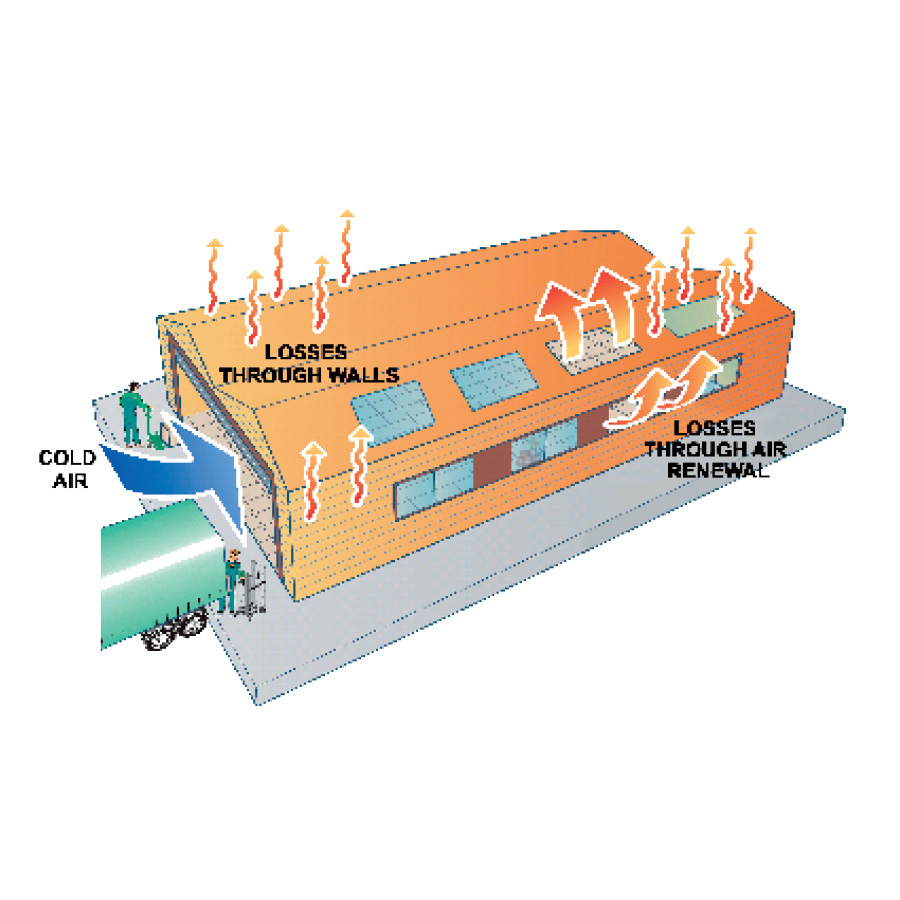
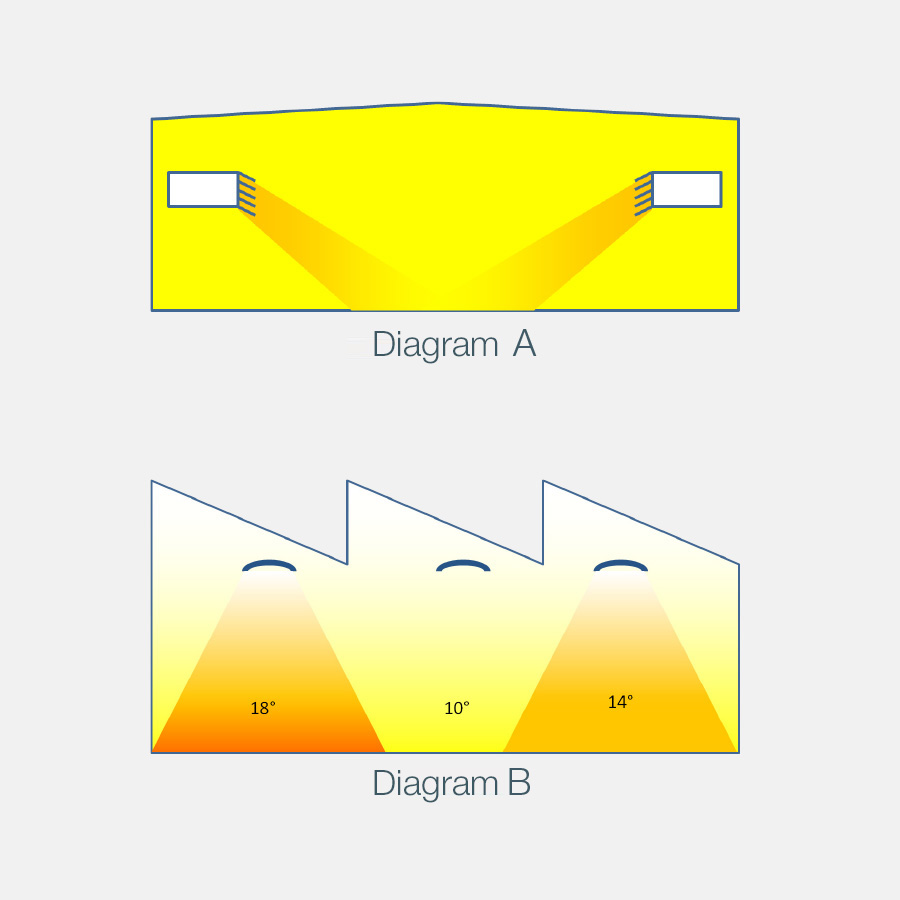
CHOICE OF TECHNIQUE
According to the height of the building and the type of insulation, the choice will be between hot air heating or radiant heating.
- For lower buildings, from 4 to 6 metres high, insulated and heated throughout, hot air is generally a more economical solution in terms of investment cost (Diagram A).
- On the other hand, radiant heating is used in buildings with high losses: large, fairly high buildings (5 metres or more), without insulation ... or to heat only a zone or part of the building.
This is because radiation heats surfaces (the floor, machines, people, etc.) and not the air; by its principle, comparable to that of lighting (Diagram B) it avoids unnecessary heating of large volumes.
Simplified selection method for Radiant and Hot Air products
1. Determining the power to install
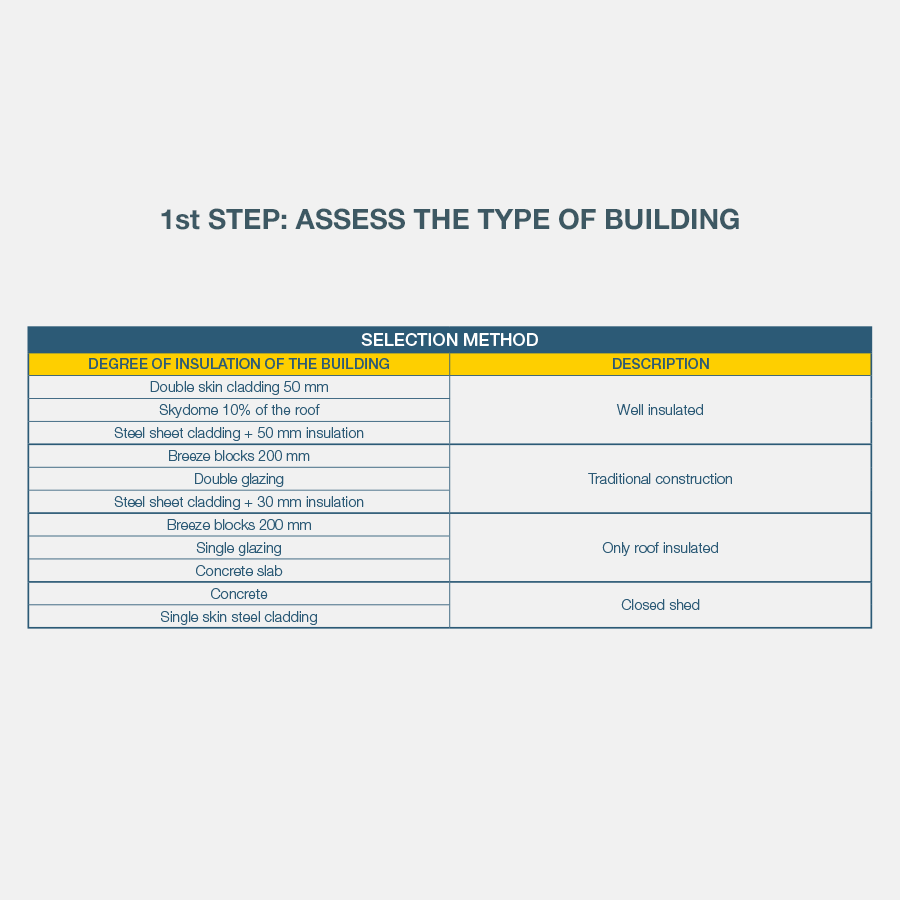
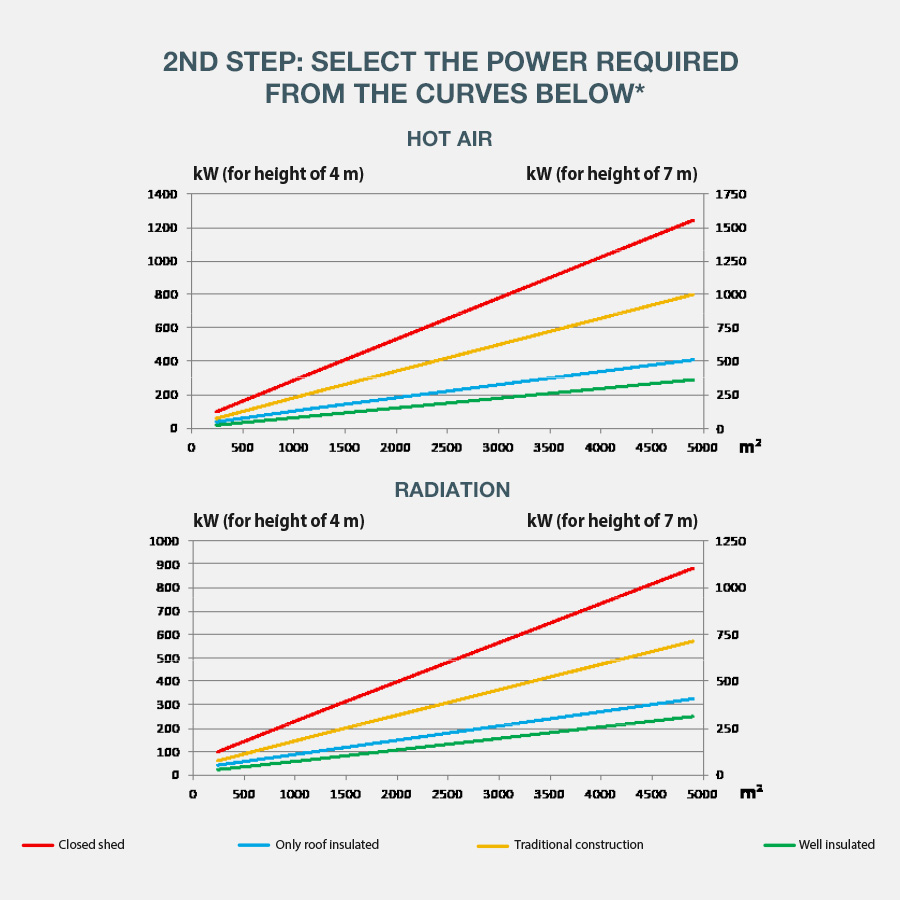
2. Selecting the equipment
With infrared radiation
2.1 DETERMINING THE HEATING APPLIANCES
The configuration is defined by 2 criteria:
- With each appliance radiating over a defined surface area, ensure that heat flows overlap to obtain optimal floor heating,
- The unit power of appliances depends on the height at which they are fixed.
2.2 DETERMINING THE NUMBER OF APPLIANCES
This follows from the 2 previously defined criteria.
A radiant appliance radiates on a rectangle on the floor according to its shape, any inclination and above all, the height at which it is fixed.
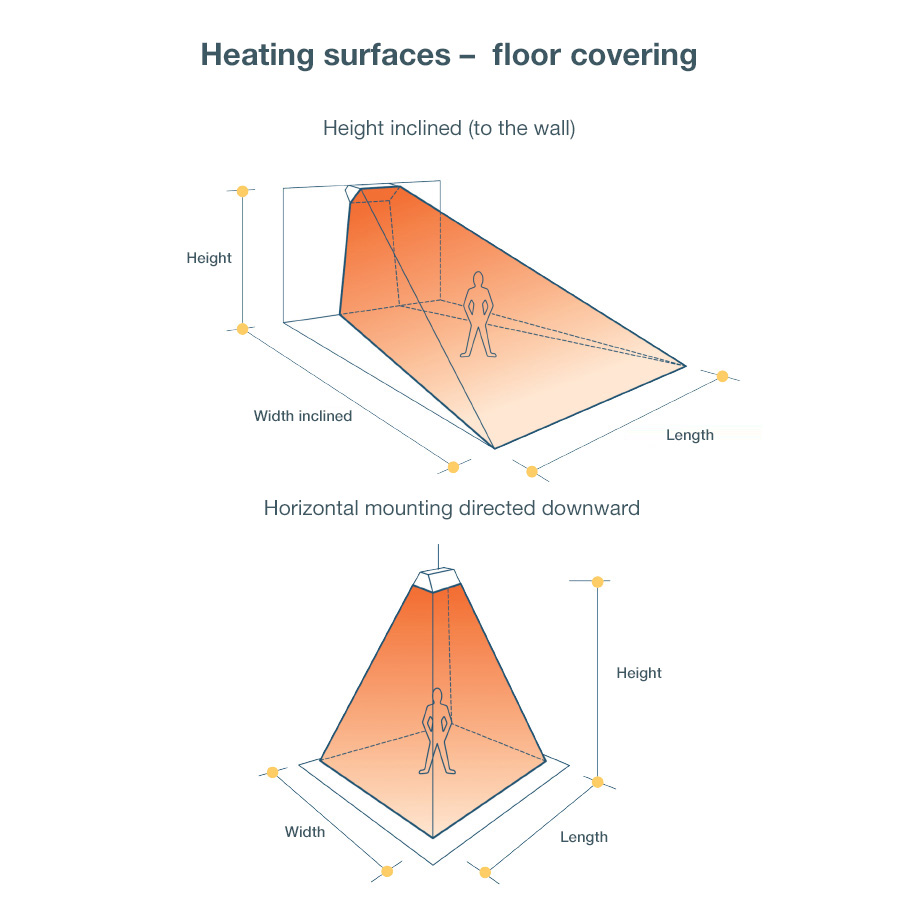
The following tables are used to select the equipment to install according to the height.
The equipment can be installed “inclined” or “directed downward”. The area covered by the radiation depends on the height of the installation and the inclination of the appliance.
Select a type of product (heating power) and divide the power to install by the unit power. This gives the number of appliances to install. Then, using the following tables, check that the area covered by the infrared radiation is sufficient.
With hot air
DETERMINING THE HEATING APPLIANCES
Once the power to install for heating the building is determined, the comfort level is obtained according to three factors in the hot air technique:
- The USEFUL RANGE of appliances, limited in distance. For example, if unit heaters with an air range of 20 metres are placed in a room 60 metres long, at least 3 will be required along the length.
- The OUTPUT installed. This must be slightly higher than the losses (for rapid warm up).
- The AIR FLOW through the appliances. It mixes the air in the room. The resulting mixing rate must be sufficient to overcome the stratification of the hot air which tends to be concentrated towards the top of the room.
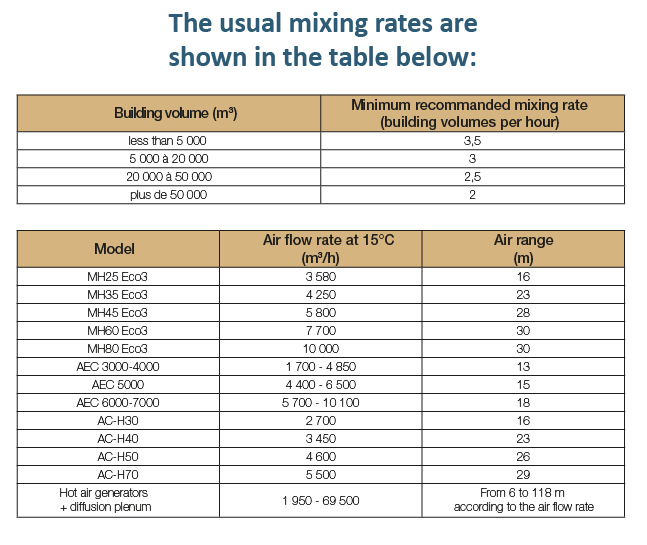
Combustion product evacuation - Building renovation solutions with radiant tubes
COLLECTED TUBES
The extraction network is installed in such a way as to collect the burnt gases discharged from each appliance.
The temperature of the gas discharged from the appliances is of the order of 200°C; in the collected network, it is of the order of 80°C.
This network is de-pressurised by an extractor installed on the roof or a wall. The functioning of these appliances is servo-linked to the functioning of the extractor.
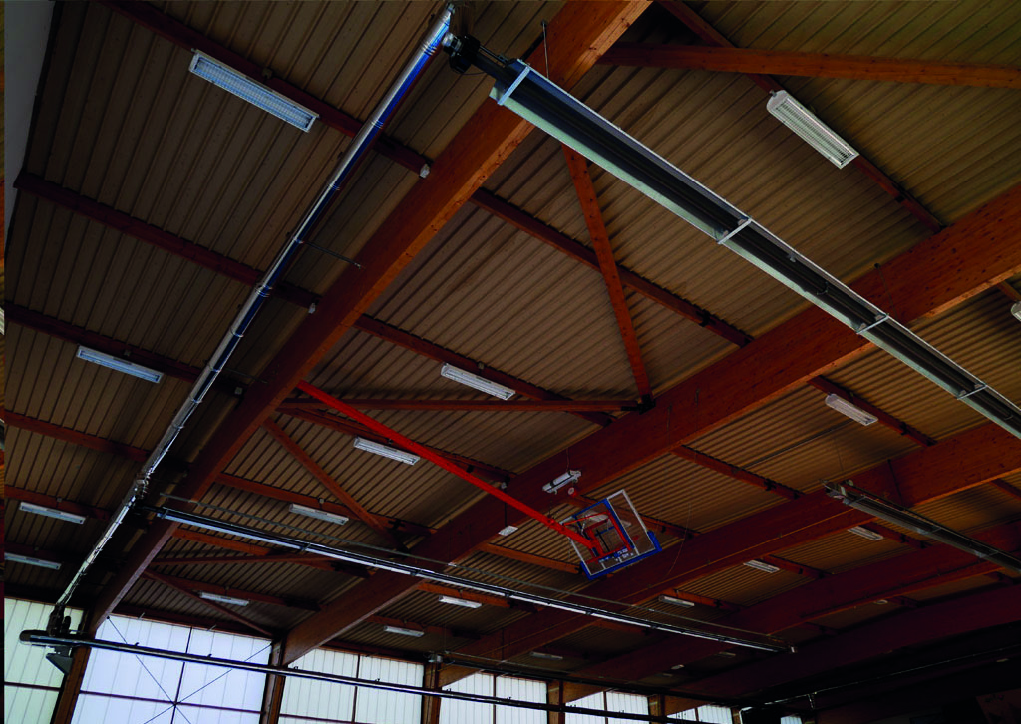
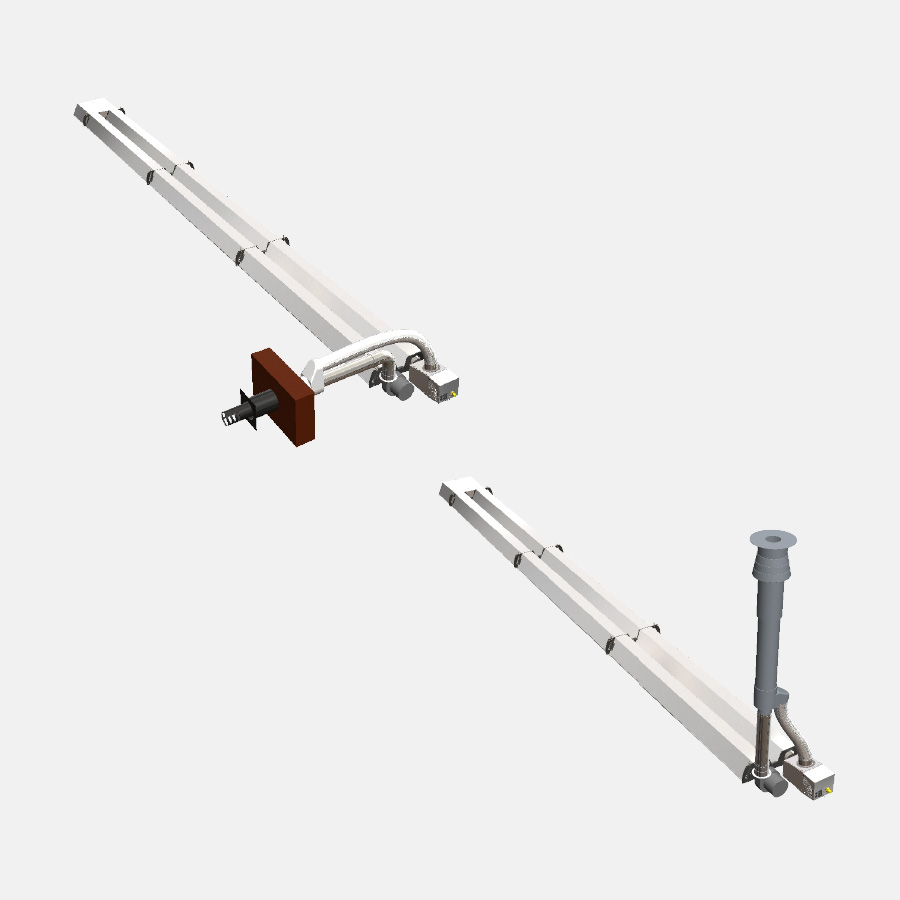
WALL (OR ROOF) MOUNTED BALANCED FLUE
The entire range of SolarHP, SolarHPr and SolarHPrc gas-fired radiant tubes is available for sealed connection, allowing them to be mounted by wall balanced flue, including those with long lengths of conduit.
NON-CONNECTED TUBES
Like radiant panels, tubes are also type A, non-connected tubes, approved. This use is possible, provided there is mechanical or static ventilation of 10 m3/h per kW installed, in compliance with European standard NF EN 13410. (This type of mounting is not authorised in establishments open to the public)
Air compensation and renewal
To complement the heating installation, high flow rate air extraction requires temperate compensation to:
- optimise the installed heating power and avoid over-dimensioning
- keep the building under slightly negative pressure
- guard against the infiltration of cold air and bad weather
- control the air speeds and temperatures in the building
Because of the variability of outside conditions, modulating gas burners are the best solution for new air renewal at constant temperature, close to the ambient temperature.
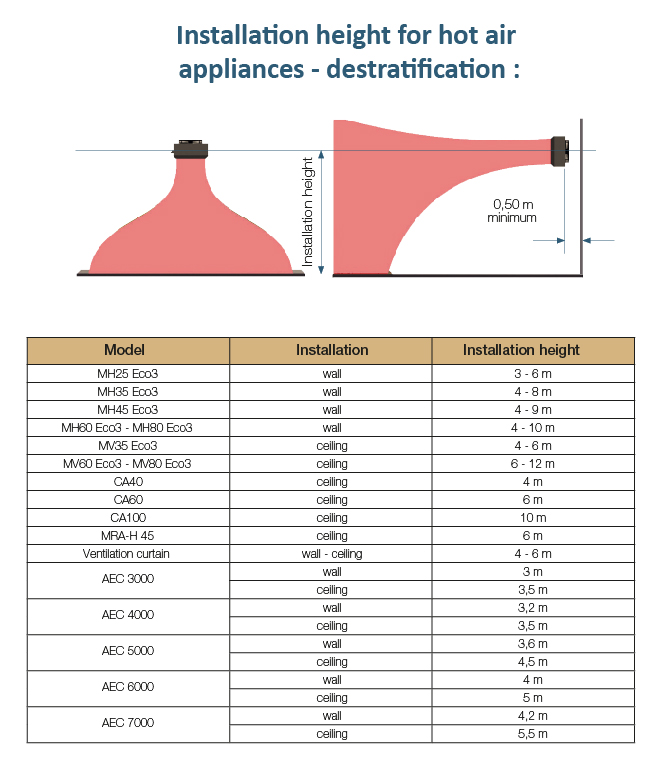
The following ranges of our products provide ideal handling of new air:
For interior mounting:
- Centrifugal modulating unit heaters:
- from 2 700 to 4 500 m3/h
- Direct discharge (or by duct)
Interior or exterior mounting:
- Hot air generator with condensation:
- from 4 700 to 24 000 m3/h
- Discharge by plenum or by duct
- Variable flow rate possible
- Hot air with modulating burner:
- From 6 000 to 70 000 m3/h
- Discharge by plenum or by duct
- Variable flow rate possible